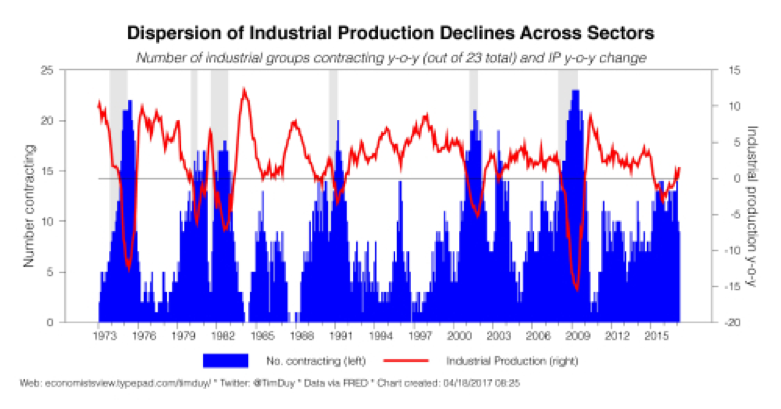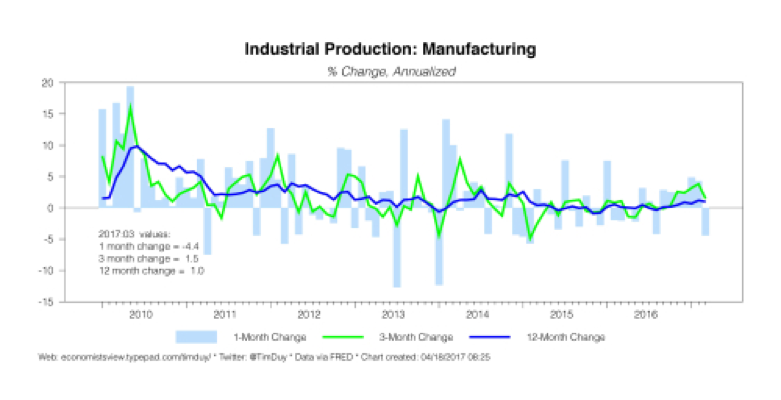Fundamental Report 27/04/2017
Core Durable Goods Orders
The U.S. trade deficit fell from a near two year high in February as slowing domestic demand weighed on imports and stronger global growth boosted exports of American goods.
The politically sensitive trade gap with China narrowed sharply by 26.6 percent from January to $23 billion ahead of a summit between President Donald Trump and China's Xi Jinping this week, although seasonal factors were likely behind the dramatic drop, economists said.
The Commerce Department said on Tuesday the trade deficit declined 9.6 percent to $43.6 billion, also as exports increased to their highest level in more than two years, after rising to a near two-year high of $48.2 billion in January.
"The U.S has its work cut out for it if it is going to try to alter the pattern of trade that has developed between China and U.S. companies over the last 10 to 20 years," said Chris Rupkey, chief economist at MUFG Union Bank in New York.
Economists had forecast the overall trade gap falling to $44.8 billion in February. When adjusted for inflation, the deficit decreased to $59.7 billion, with exports of goods the highest on record as an earlier drag from a strong dollar fades.
http://www.reuters.com/article/us-usa-economy-trade-idUSKBN1761E7
Output at U.S. manufacturers fell in March by the most since August as production of automobiles and parts and business equipment declined, Federal Reserve data showed on Tuesday.
Key Points
- Factory production dropped 0.4 percent, following a 0.3 percent rise in February (forecast called for unchanged)
- Total industrial production gained 0.5 percent on a record jump in utility output (forecast called for 0.5 percent rise)
- Capacity utilization, which measures the amount of a plant that is in use, rose to 76.1 percent from 75.7 percent in the prior month (forecast called for 76.1 percent)
https://www.bloomberg.com/news/articles/2017-04-18/u-s-factory-output-falls-most-since-august-amid-drop-in-autos
The Federal Reserve released March industrial production data today. Overall production was up 0.5% supported by a big jump in utilities. Despite the headline gains, it was something of a mixed message. First, the dispersion of weakness was the lowest since 2014:

It looks like with the rebound in energy prices and related production activity, the industrial side of the economy has turned a corner. On a softer note, manufacturing activity tumbled:

This was fairly disappointing considering the long run of solid growth beginning in the second half of last year. Slowing motor vehicle production took a bite out of the numbers. Specifically, autos, not trucks:

That chart makes it fairly clear that Americans prefer big vehicles to small ones. Overall motor vehicle sales are probably past their peak, and we can expect this source of weakness in industrial production to persist until sales settle into a new level. Note that motor vehicle output contributed 0.14 and 0.06 percentage points to overall growth in 2015 and 2016 respectively. That gives some sense of the magnitude of the opposite effect on growth this year - noticeable, but small.
http://economistsview.typepad.com/timduy/2017/04/autos-drag-down-industrial-production-housing-solid.html
 It looks like with the rebound in energy prices and related production activity, the industrial side of the economy has turned a corner. On a softer note, manufacturing activity tumbled:
It looks like with the rebound in energy prices and related production activity, the industrial side of the economy has turned a corner. On a softer note, manufacturing activity tumbled:
 This was fairly disappointing considering the long run of solid growth beginning in the second half of last year. Slowing motor vehicle production took a bite out of the numbers. Specifically, autos, not trucks:
This was fairly disappointing considering the long run of solid growth beginning in the second half of last year. Slowing motor vehicle production took a bite out of the numbers. Specifically, autos, not trucks:
 That chart makes it fairly clear that Americans prefer big vehicles to small ones. Overall motor vehicle sales are probably past their peak, and we can expect this source of weakness in industrial production to persist until sales settle into a new level. Note that motor vehicle output contributed 0.14 and 0.06 percentage points to overall growth in 2015 and 2016 respectively. That gives some sense of the magnitude of the opposite effect on growth this year - noticeable, but small.
http://economistsview.typepad.com/timduy/2017/04/autos-drag-down-industrial-production-housing-solid.html
That chart makes it fairly clear that Americans prefer big vehicles to small ones. Overall motor vehicle sales are probably past their peak, and we can expect this source of weakness in industrial production to persist until sales settle into a new level. Note that motor vehicle output contributed 0.14 and 0.06 percentage points to overall growth in 2015 and 2016 respectively. That gives some sense of the magnitude of the opposite effect on growth this year - noticeable, but small.
http://economistsview.typepad.com/timduy/2017/04/autos-drag-down-industrial-production-housing-solid.html 
